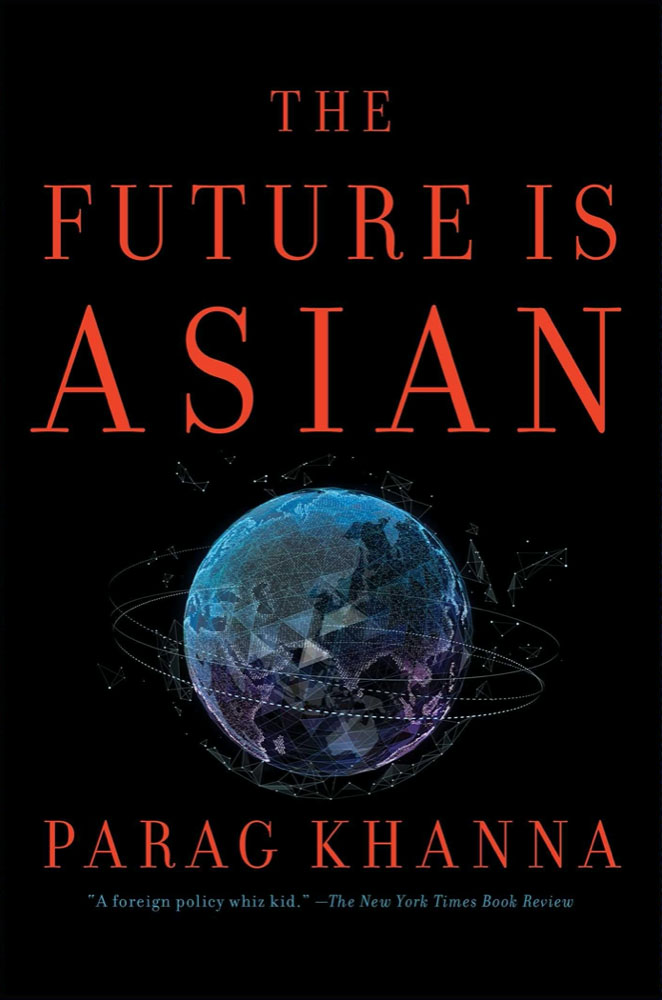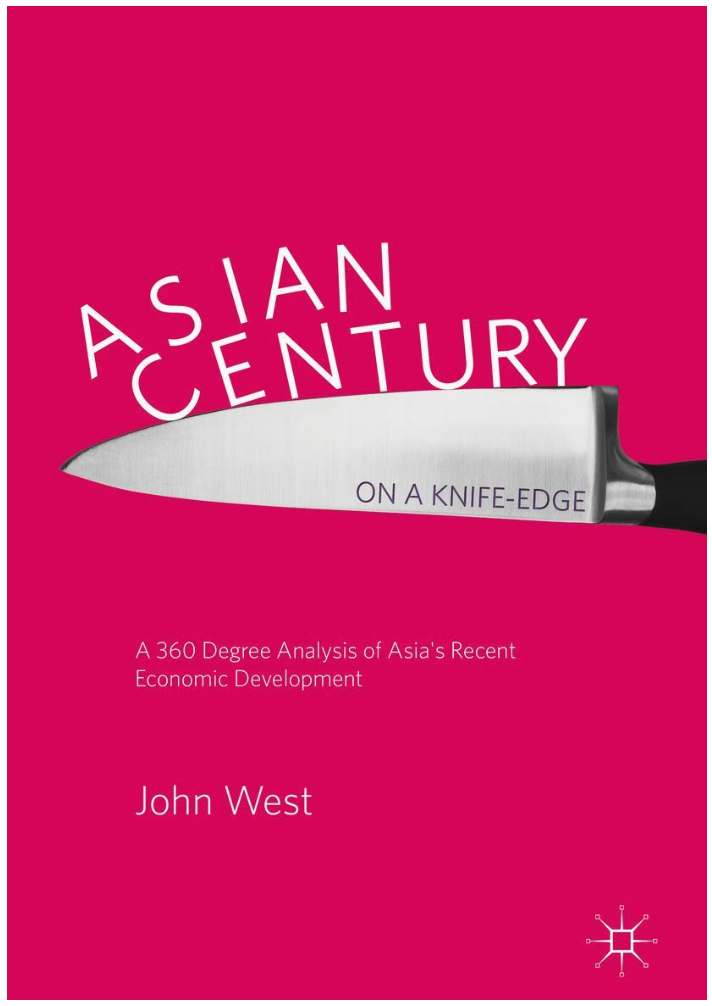Ruta de navegación
Menú de navegación
Blogs
Entries with label asia .
[Parag Khanna, The Future is Asian. Simon & Schuster. New York, 2019. 433 p.]
review / Emili J. Blasco
 Parag Khanna's book can be greeted with suspicion from entrance because of the apparent axiomatic character of his degree scroll. However, the blunt assertion on the cover is softened when one begins to read the pages inside. The thesis of the work is that the world is in a process of asianisationnot of chinisationMoreover, this process is presented as another coat of paint on the planet, not as a colour that will be clearly predominant or definitive.
Parag Khanna's book can be greeted with suspicion from entrance because of the apparent axiomatic character of his degree scroll. However, the blunt assertion on the cover is softened when one begins to read the pages inside. The thesis of the work is that the world is in a process of asianisationnot of chinisationMoreover, this process is presented as another coat of paint on the planet, not as a colour that will be clearly predominant or definitive.
It is possible that the discussion over whether the US is in decline and will be replaced by China as the pre-eminent superpower obscures other parallel developments. Those watching Beijing's rise in the world order, writes Khanna, "have often been paralysed by two views: either China will devour the world or it is on the verge of collapse. Neither is correct. "The future is Asian, even for China," he asserts.
Khanna believes that the world is moving towards a multipolar order, which is also the case in Asia, even if China's size often dazzles.
The author's Indian background and also his time living in the United States may have influenced this judgement, but he offers figures to support his words. Of the 5 billion people living in Asia, 3.5 billion are non-Chinese (70%): China thus has only a third of Asia's population; it also accounts for slightly less than half of Asia's GDP. Other data: half of outward investment from the continent is non-Chinese, and more than half of outward investment goes to Asian countries other than China. Asia is therefore "more than China plus".
It is not just a question of size, but of wills. "A China-led Asia is no more acceptable to most Asians than the notion of a US-led West is to Europeans," says Khanna. He rejects the idea that, because of China's power, Asia is heading towards a kind of tributary system like the one ruled in other centuries from Beijing. He points out that such a system did not extend beyond the Far East and was based primarily on trade.
The author reassures those who fear Chinese expansionism: "China has never been an indestructible superpower presiding over all of Asia like a colossus". He warns that while Europe's geographical characteristics have historically led many countries to fear the hegemony of a single power, Asia's geography makes it "inherently multipolar", as natural barriers absorb friction. Indeed, clashes between China and India, China and Vietnam or India and Pakistan have ended in stalemates. "Whereas in Europe wars have occurred when there is a convergence in power between rivals, in Asia wars have occurred when there is a perceived advantage over rivals. So the more powerful China's neighbours like Japan, India or Russia are, the less likely they are to conflict with each other.
For Khanna, Asia will always be a region of distinct and autonomous civilisations, especially now that we are witnessing a revival of old empires. Asia's geopolitical future will not be led by the US or China: "Japan, South Korea, India, Russia, Indonesia, Australia, Iran and Saudi Arabia will never come together under a hegemonic umbrella or unite into a single pole of power".
There will not be, then, a Chineseisation of the world, according to the author, and the Asianisation that is taking place - a shift of the world's weight towards the Indo-Pacific - need not be seen as a threat to those who live elsewhere. Just as there was a Europeanisation of the world in the 19th century, and an Americanisation in the 20th century, we are witnessing an Asianisation in the 21st century. Khanna sees this as "the most recent substratum of sedimentation in the geology of global civilisation", and as a "layer" it does not imply that the world Withdrawal to what came before. "Being more Asian does not necessarily mean being less American or European," he says.
The book analyses the weight and fit of different Asian countries on the continent. Of Russia, he argues that it is strategically closer to China today than at any time since its communist pact in the 1950s. Khanna believes that geography leads to this understanding, as it invites Canada to maintain good relations with the United States; he predicts that climate change will further open up the lands of Siberia, which will integrate them more with the rest of the Asian continent.
As for India and China's relationship, Khanna believes that both countries will have to accept each other as powers more normally. For example, despite India's reluctance towards China's Silk Road and India's own regional connectivity projects, in the end the two countries' preferred corridors will "overlap and even reinforce each other", ensuring that products from inland Asia reach the Indian Ocean. "Geopolitical rivalries will only accelerate the Asianisation of Asia," says Khanna.
In assessing the importance of Asia, the book includes Middle Eastern oil. Technically, the region is part of the continent, but it is such a separate chapter with its own dynamics that it is difficult to see it as Asian territory. The same is true when label is used to refer to Israel or Lebanon. It can give the impression that the author is lumping everything together in order to make the figures more impressive. He argues that the Middle East is becoming less and less dependent on Europe and the United States and is looking more to the East.
Khanna is in a position to reasonably defend himself against most of the objections to his text. Most controversial, however, is his near-defensive justification of technocracy as a system of government. Beyond the descriptive attitude of a model that in some countries has received an important economic and social development , Khanna even seems to endorse its moral superiority.
[John West, Asian Century on A Knife Edge: A 360 Degree Analysis of Asia's Recent Economic Development. Palgrave Macmillan. Singapore, 2018. 329 p.]
REVIEW / Gabriela Pajuelo

The degree scroll of this book seems to contribute to the generalised chorus that the 21st century is Asia's century. In reality, the book's thesis is the opposite, or at least puts this claim "on a knife's edge": Asia is a continent of great economic complexity and competing geopolitical interests, posing a series of challenges whose resolution will determine the region's place in the world in the coming decades. For now, argues John West, a university professor in Tokyo, nothing is certain.
The book begins with a preamble on the recent history of Asia, from the Second World War to the present day. Already at the beginning of this period, economic liberalism was established as the standard doctrine in much of the world, including most Asian countries, in a process driven by the establishment of international institutions.
China joined this system, without renouncing its domestic doctrines, when it joined the World Trade Organisation in 2001. Since then, there have been some shocks such as the financial crisis of 2007-2008, which severely affected the US economy and had repercussions in the rest of the world, or the recent tariff tensions between Washington and Beijing, as well as the current global crisis caused by the coronavirus pandemic.
The principles of protectionism and nationalism deployed by Donald Trump and an increased US resource to the hard power in the region, as well as a more assertive policy by Xi Jinping's China in its geographical surroundings, also resorting to positions of force, such as in the South China Sea, have damaged the multilateralism that had been built up in that part of the world.
The author provides some thought-provoking insights into the challenges that Asia will face, given that the factors core topic that favoured its development have now deteriorated (mainly due to the stability provided by international economic interdependence).
West examines seven challenges. The first is to gain a better position in global value chains, as since the 1980s the manufacture of components and the production of final products has taken place in different parts of the world. Asia is heavily involved in these supply chains, in fields such as technology or apparel production, but is subject to business decisions by multinationals whose practices are sometimes not socially responsible and allow abuse of labour rights, which are important for the middle classes development .
The second challenge is to maximise the potential of urbanisation, which has grown from 27% of the population in 1980 to 48% in 2015. The region is known for its densely populated mega-cities. This brings with it some challenges: people migrating to industrial centres generally move from leave productivity jobs to high productivity jobs, and health care capacity is put at test . But it is also an opportunity to improve environmental practices or encourage innovation through green technologies, even though much of Asia today still faces high levels of pollution.
Another challenge is to give all Asians equal opportunities in their respective societies, from LGBT people to women and indigenous communities, as well as ethnic and religious minorities. The region also faces a major demographic challenge , as many populations either age (such as China's, despite the correction of the "two-child policy") or continue to expand with presumed future supply problems (such as India's).
West also points to reference letter, the barriers to democratisation in the region, with China's notable immobility, and the spread of economic crime and corruption (counterfeiting, piracy, drug trafficking, human trafficking, cybercrime and money laundering).
Finally, the author speaks of challenge that Asian countries can live together in peace and harmony, while China consolidates its position as a regional leader: if there is a Chinese commitment to thesoft powerThrough the Belt and Road initiative, there is also a more confrontational attitude on the part of Beijing towards Taiwan, Hong Kong and the South China Sea, while actors such as India, Japan and North Korea want a greater role.
Overall, the book provides a comprehensive analysis of Asia's economic and social development and the challenges ahead. In addition, the author offers some thought-provoking insights, arguing that the proclaimed "Asian century" is unlikely due to the region's lagging economic development , as most countries have not caught up with their Western counterparts in terms of GDP per capita and technological sophistication. However, it leaves the future open: if the challenges are successfully met, the time may indeed come for an Asian century.
